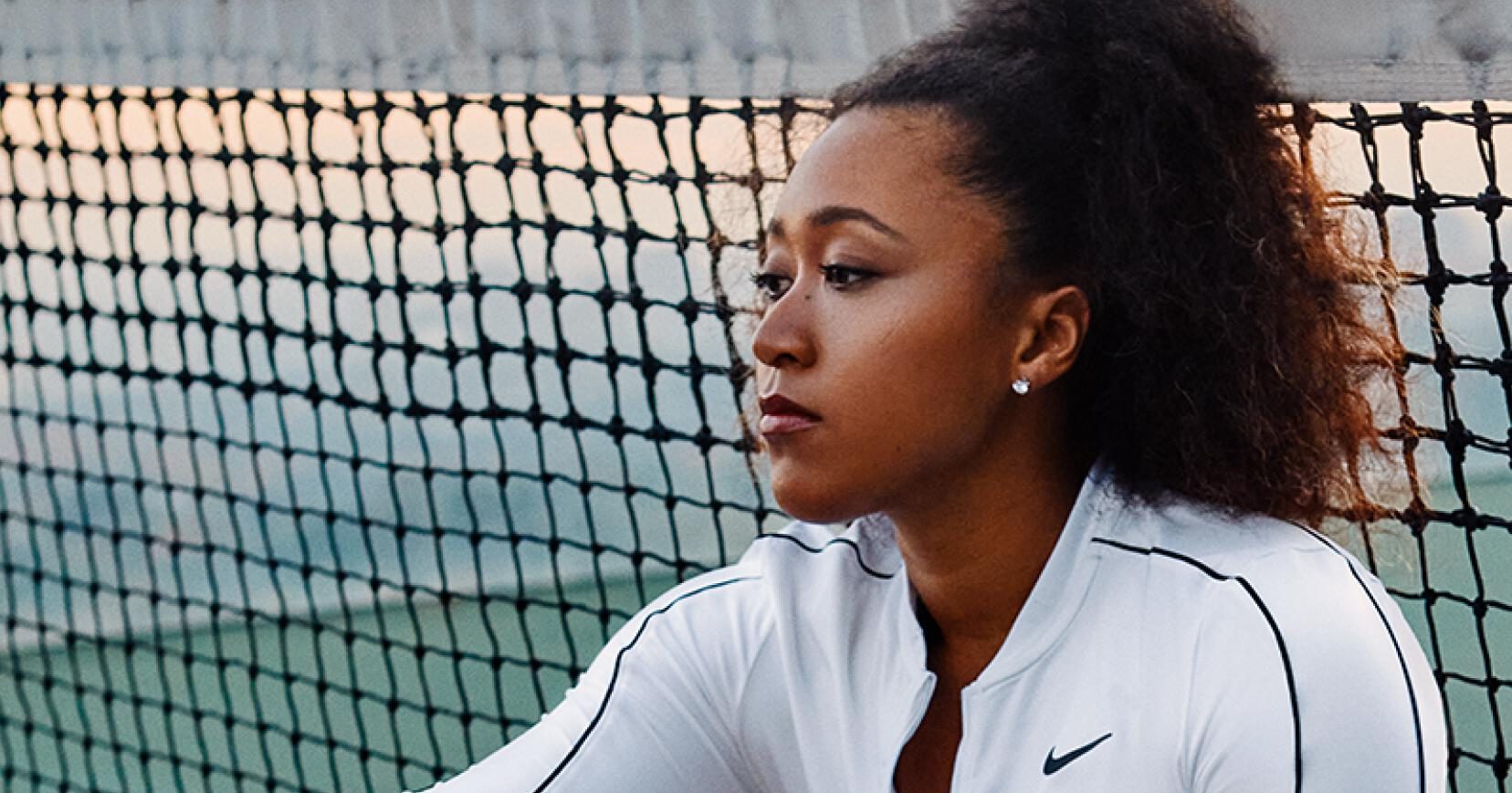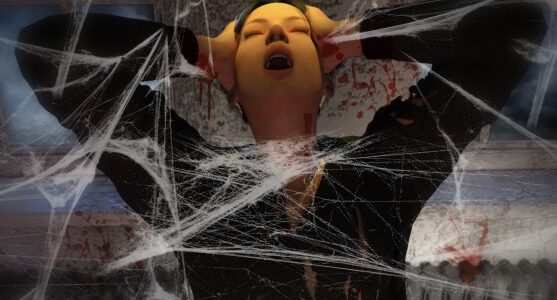LISTEN TO THIS ARTICLE:
In late May of this year, tennis champion Naomi Osaka chose to forgo participating in news conferences during the French Open because of their negative effects on her mental health. In a remarkable display of callousness, French tennis officials fined the 23-year-old $15,000 and threatened to ban her from the rest of this year’s Grand Slam tournaments if she did not reverse course.
Her response? She beat them to it and withdrew from the tournament.
As the summer Tokyo Olympics draw closer and the press examines athletes with more scrutiny, we are continually reminded that athletes are judged to harsh and damaging extremes. Traditionally, athletic leagues and sports media have largely controlled the narratives in these situations, but that is changing. Growing athlete independence is beginning to challenge this power structure as players demand better treatment for the benefit of their mental health.
Athletes are human, too
“I am human.”
Sha’Carri Richardson recently tweeted this after testing positive for marijuana during a routine drug screen. The public and athletic officials should take those words to heart.
It is easy to view elite athletes as super-human. Every generation produces athletes that run faster, jump higher, and hit harder than any generation before. They push boundaries and break records that seemed unbeatable when they were set just a few years before. They represent the current pinnacle of human physical achievement in their respective disciplines. We the public put these athletes on a pedestal and assume that their extraordinary abilities extend from the physical realm into the psychological.
But we couldn’t be more wrong.
Elite athletes actually suffer from mental illnesses at least as frequently (if not more) as the general population. Over a third of elite athletes suffer from symptoms of at least one mental illness. The most common problems are mood disorders like anxiety and depression, which strike one in three athletes. A quarter struggle with sleep problems, while a fifth use alcohol or drugs in unhealthy ways. Eating disorders are common as well, appearing in about 13.5% of athletes, though the rates vary widely between sports.
The pitfalls of being an athlete
Beyond the risks that athletes share with the rest of us, there are several factors they experience that raise the potential for mental illness even more. Events that separate players from their sports are possible seeds for mental illness symptoms. For many, retirement from professional sports is a difficult step and can present a trigger for symptoms. Transitioning out of a position where they received a lot of media attention – sports articles, news segments, play-by-play reviews – is a big change, especially for the ones who thrived on it.
Another common source of anguish is major injuries that impact their performance or prevent them from playing altogether. Symptoms of depression follow in the weeks after an injury in over half of professional athletes. The worst is an injury that is so bad it forces the athlete into early retirement. Imagine working for years to be at the pinnacle of your game only to have your professional career cut short in an instant. These unplanned exits are likely to result in anxiety, depression, and substance abuse.
The scrutiny of celebrity
Athletes are not just their sport, their scores, or their championships, yet the pressures that surround them can make it feel like those is all that matters. The driving forces come from all sides: the media, crowds, league officials, team owners, and sponsors. This is where stories like Naomi’s come in.
Ms. Osaka’s initial announcement on Twitter that she would not be doing press gave the public an insight into her world.
“I’ve often felt that people have no regard for athletes [sic] mental health and this rings very true whenever I see a press conference or partake in one… I’m just not going to subject myself to people that doubt me. I’ve watched many clips of athletes breaking down after a loss in the press room and… I believe that whole situation is kicking a person while they’re down and I don’t understand the reasoning behind it.”
Her reasons became clearer following the French officials’ response fining her and threatening to ban her from the tournament. In a statement published on her Instagram and Twitter, she revealed that she has been through multiple episodes of depression and anxiety that started in 2018 during the U.S. Open. The initial trigger was the negative response from the crowd (she was booed) when she bested the public favorite, Serena Williams, to take the championship. She went on to state that the press conferences exacerbate her social anxiety, creating significant stress during the tournament.
Not the first, not the last
This experience is not unique to the young tennis pro, however. Looking back in the history of professional sports, we find many like hers. The superstars preceding Naomi, Serena and Venus Williams, had their fair share of conflicts with the press, the crowd, and other players. They have faced a media that has for years focused more on their muscular physiques than on their performance on the court.
Commentators have picked apart their dress and compared their bodies to those of men and animals. Cartoonists have portrayed them using imagery that was blatantly sexist and racist. In 2012, another female tennis player even stuffed her clothing with towels at a match in an effort to mock Serena’s body. People in the crowd have hurled racial epithets at the sisters on multiple occasions. The level of offensive scrutiny the Williams sisters have suffered during their careers is truly grotesque.
Misunderstood and judged
Another athlete who chose to prioritize his mental health over contract-mandated publicity is former NFL running back Ricky Williams. During his career in the NFL Williams was punished multiple times for positive marijuana tests. He was criticized for avoiding the press and giving curt, sarcastic answers when he did meet with them. He often did post-game interviews while still wearing his helmet to shield his face from the media’s gaze. Reporters called him immature, and more than a few people told him he needed to ‘grow up.’
The truth about Ricky is that he has social anxiety disorder, but he didn’t know that until years into his professional football career. Before he started treatment, he was deathly afraid of going out in public and interacting with new people. That’s an awful weight to bear for someone who was one of the most sought-after players entering professional football. His skills brought him instant fame and, suddenly, he was playing in front of hundreds of thousands of people and on national television. He was miserable and isolated and had no idea why until he finally started therapy and got his diagnosis. When he finally started focusing on what he needed (rather than what other people needed from him), he got better.
Searching for help
More than a few turn to alcohol and other drugs as a reprieve from their suffering. This includes Olympians like swimmer Michael Phelps, soccer player Abby Wambach, and, most recently, runner Sha’Carri Richardson. Phelps and Wambach coped with depression and cited their DUI arrests as the wake-up calls they needed to jolt them towards seeking help and getting sober.
Sha’Carri Richardson used marijuana to cope after a reporter informed her about the death of her biological mother. Instead of sympathy for her situation, U.S.A. Track and Field suspended her from competing in the 100-meter dash in the upcoming Olympics. All that happened despite the fact that marijuana does not enhance physical performance nor is it illegal in the state she used it (Oregon).
Many Olympians suffer from depression in the lull following the hype of the games. When your identity is wrapped up in a sport, what happens when you stop playing?
In addition to depression and anxiety, many mega-stars are plagued by thoughts of suicide. Michael Phelps, Apolo Ohno, Sasha Cohen, Shaun White – the list of professional athletes who have considered ending their lives is long. It’s so common among Olympians that there is even a documentary about it called, “The Weight of Gold.” According to Phelps, many Olympians suffer from depression in the lull following the hype of the games. This reflects similar patterns when other professional athletes retire or get injured. When your identity is wrapped up in a sport, what happens when you stop playing?
Humans vs. products
These athletes’ stories are now finally revealing that the very experience of being an elite athlete is detrimental to an individual’s mental health. At the center of it lies a single conflict: Athletes want to be treated as individuals while those around them more often see them as products. When they are not performing at their peak, their value decreases.
Players in the NFL have been talking about this for years. Teams drop or trade them following major injuries with little concern about the players themselves. No attention is paid to the bonds they have formed with their teammates or the impressive performances they have given in the past. Every time they play, they risk injuries that would lead to getting cut from the team with no negotiation. They love the game, but it doesn’t love them back.
It wasn’t Naomi’s depression and anxiety that got their attention; it was the threat to profits that did.
It’s not unique to team sports, though. Michael Phelps echoed this sentiment in interviews surrounding his motivation to produce “The Weight of Gold.” The French Open officials’ harsh response to Naomi Osaka’s refusal to do press has a hidden financial motivation as well. Think of all the brands you see around athletes at a press conference. Every single one of those companies paid big money to have their names there. It wasn’t Naomi’s depression and anxiety that got their attention; it was the threat to profits that did.
Inside vs. outside
Athletes struggle to reconcile how they see themselves with how the public views them from the outside. The media portrays them as larger-than-life heroes who must be nothing if not profoundly thankful for their position at the top. When athletes appear unhappy for any reason, outsiders often seen them as greedy and ungrateful.
That environment has traditionally promoted a long-standing stigma around mental health among elite athletes. Both other athletes and the public at large see it as a weakness, and more than a few athletes feel embarrassed about seeing a counselor. Many others don’t go because they aren’t aware that they are even experiencing a mental illness. The resulting environment doesn’t leave any space for the athletes to come clean about how they are truly feeling.
How many players have suffered alone for years while hiding their emotions and their true selves?
This toxic atmosphere has a wide ranging influence. Carl Nassib recently became the first active NFL player to come out as gay, and he had already played in the league for five years before he felt comfortable enough to do so. Jason Collins was the first NBA player to come out just a few years earlier in 2014. However, they are surely not the first gay players in either league. The NBA is 75 years old, and the NFL is over 100. It begs the question: How many players have suffered alone for years while hiding their emotions and their true selves?
Growing athlete independence
While it’s clear that individual attitudes towards mental health are improving, institutions can take time to catch up. Increasing athlete independence may soon force them to speed up, though. The explosion of social media has allowed players direct access to fans that was unheard of 20 years ago. Naomi Osaka has 2.5 million Instagram followers, and her announcement that she was forgoing the French Open received almost 850,000 likes. With such a massive reach, French Open officials should soon realize that they need her more than she needs them.
Colin Kaepernick is another prime example of athlete empowerment. After the NFL blacklisted him following his protests (kneeling during the national anthem) against police brutality and social injustice, he gained more name recognition and media coverage than he ever had during his time playing. His Twitter and Instagram accounts have 2.4 million and 3.7 million followers, respectively. He landed a multi-year contact with Nike, who continue to support his message through ad campaigns even though he no longer plays football professionally.
Developing support systems
Despite their growing independence, the onus should not be on the athletes to try to overpower the governing athletic bodies. The systems athletes work in need to evolve to support their health instead of just profiting off their performance.
Shaking off the stigma of mental illness is a critical step, and we are already on our way to doing so. As more people speak out about their mental health, others will be more comfortable doing the same. Athletic organizations can support this by providing venues for this to happen. If coaches learn about mental health, they can better offer an understanding ear to athletes in need. This helps shift the sports training culture and creates an environment that is more suited to promoting mental health and treating mental illness.
The International Olympic Committee is starting to get on board as well. They have adopted a mental health assessment tool to detect when athletes need mental help. Mental health professionals working with athletes use the tool to screen them for symptoms. If the initial screening produces worrying results, they go on to more detailed questionnaires that guide different levels of intervention. This offers an excellent model onto which other professional sports leagues can build for the benefit of their athletes.
Making progress
Sports leagues must take action, but progress only happens when players push for it. Increasing support from fans and sponsors gives athletes the power to demand necessary change. The outpouring of support from fans for Naomi Osaka has been immense. Nike is sticking with Sha’Carri Richardson. Social media gives athletes more control over their stories, enabling them to show the world they are not spoiled brats demanding special treatment. To the powers that be in the sports world, listen to your athletes. They are human, so treat them humanely.


 Learn
Learn Get News
Get News Find Help
Find Help
 Share
Share
 Share
Share
 Share
Share
 Share
Share



